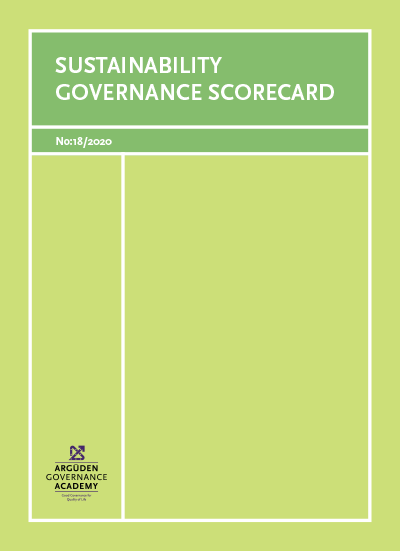Methodology
The Sustainability Governance Scorecard© is an impact-research with a motivation to help improve the state of the world by measuring and learning from the peers. It is designed as an improvement tool for the companies to have a more sustainable future.
Sampling
The research mainly focuses on quality of decision making and governance of sustainability issues. The scope encompassed 212 different companies from 10 industries in 7 countries. The companies are trading at key sustainability stock exchanges which are signatories of Sustainable Stock Exchanges Initiative. The companies which have asset size higher than 1 Billion Dollar are selected and diversified by different initiatives and reporting schemes. Selected 10 industries are comparable across countries. Financial and technology companies are not selected due to their regulatory standards may vary by country.


Evaluation Criteria
The SG Scorecard© identifies and utilizes 390 measurable criteria for sustainability governance. The criteria are either met or not met (0/1). The criteria are defined to assess the governance quality of companies’ sustainability efforts under four main areas:
- providing guidance,
- implementation,
- oversight of the board,
- continuous learning throughout the cycle.
Each of these areas are assessed with objective criteria, designed through a lens of governance. The key areas SG Scorecard identifies are listed in the following table:
Data Collection
The analysis is limited only with the publicly available data. The research utilizes;
- 2018 Annual Reports,
- 2018 Sustainability Reports,
- Governance and Sustainability section of the companies’ websites.
After the data collection process was finalized, we shared our evaluation of the data with the investment relations departments of Global Sustainability Leaders to provide them an opportunity to review the way we have interpreted their disclosures with respect to the 390 criteria (See: Criteria) for this research.
Evaluation Method
Measurement is conducted by weighted average method. The evaluation includes two dimensions;
- Breadth of sustainability approach: Criteria which all the company should adopt in order to ensure the sustainability climate in the company are named as breadth criteria. Breadth criteria give clue to the question “What?”. It provides information about the approach company adopted in terms of sustainability governance.
- Depth of sustainability approach: Criteria which show the internalization of the essence of sustainability governance culture are listed as depth criteria. Depth criteria give clue to the question “How?”. It provides detailed information about how the company deploy sustainability governance throughout its impact span.
The scorecard is evaluated based on the combination of breadth and depth score and shared by 5 tiers to provide better granularity in order to identify good examples. The list in each tier is distributed alphabetically.
The SG Scorecard does not aim to measure the sustainability performance but seeks the presence of an environment and a climate of sustainability governance where sustainability efforts can flourish. In line with this perspective, the Report is distinguished by sharing best in class examples of various sustainability governance steps which fosters the learning pace among peers.
The research is expected to provide an opportunity for benchmarking and serve as a guideline for creating effective sustainability governance mechanisms, learning from peers, and thereby contributing to deployment of good practices on sustainability.
This research was inspired by Dr. Yılmaz Argüden’s “Responsible Boards – Action Plan for a Sustainable Future” article, containing “The Sustainability Checklist for Responsible Boards”. Please see Checklist for the short version or IFC Private Sector Opinion 36, 2015 for the full version.



